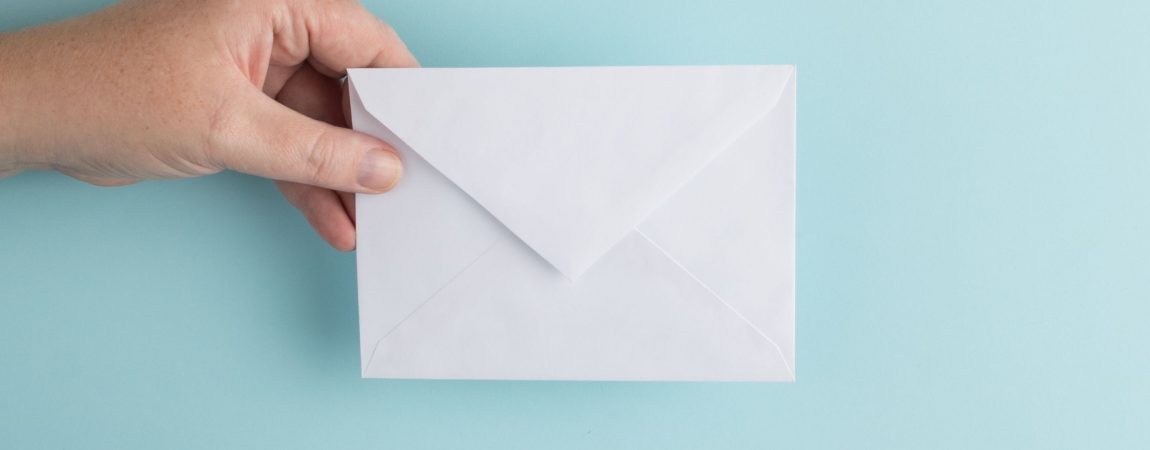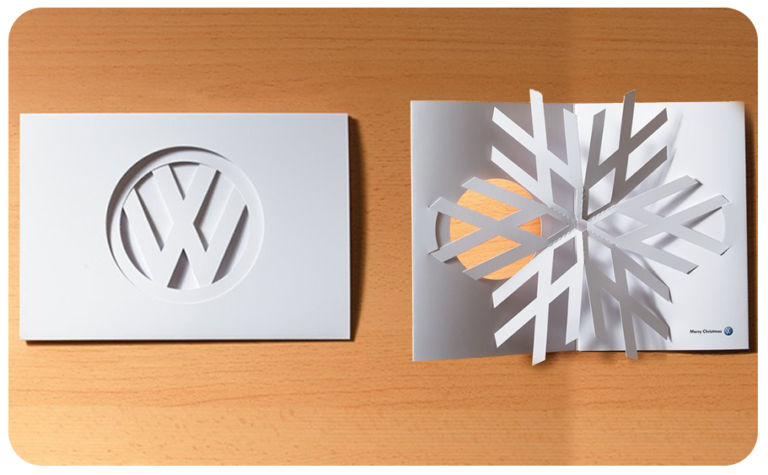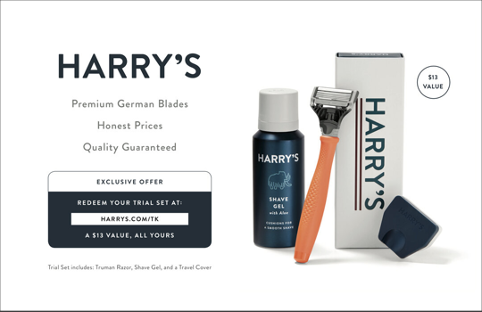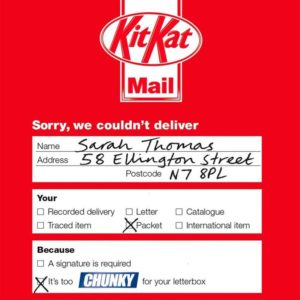The Complete Guide to Direct Mail
with tips for

What is Direct Mail?
A form of direct marketing, direct mail is a marketing strategy that involves sending a physical, letter, postcard, flyer, brochure or promotional package to prospective or current customers.
Whether you have a B2B or B2C business, you can utilise direct mail to make your company stand out from the crowd. Direct mail can also be used for various marketing strategies, for example sending a direct mail to current customers who may not have purchased for some time to re-engage them. Alternatively, sending direct mail to your prospective customers in an attempt to raise brand awareness and produce first-time customers can be an effective way of using direct mail.
Is Direct Mail Still Effective?
With the rise and strong impact of digital marketing, you have every right to question if direct mail is still effective in the digital age.
But, it most certainly is! Statistics show that it is potentially one of the most effective marketing channels.
Direct mail creates a more memorable experience. To hold a physical item in your hands provides a much more deeply embedded memory than words and images on a screen. Customers are going to remember your direct mail and your brand will have a longer-lasting effect compared to if you send the virtual equivalent.
This is supported by research that shows that our brains respond differently to printed material versus digital media. It was found that more time was spent viewing printed marketing materials and customers had a stronger emotional response and memory for them than the digital alternative. More research shows that brand and advertisement recall was 70% higher when a customer was exposed to direct mail rather than a digital advert.
In terms of motivational responses, direct mail is also still very effective, such as leading to a purchase or engagement. It is found to be 20% higher for direct mail than other marketing methods. Direct mail can be effective, particularly when you optimise your direct mail’s response rate.
How Much Does Direct Mail Cost?
A direct mail does not cost as much as you may think, especially when you use a direct mailing specialist and mailing house.
When you post out your own direct mail is can become very costly, due to the costs of design, paper, printing, envelopes and postage. When using a direct mailing house like Snapmail, your costs will be hugely reduced. We buy our resources in bulk and are then able to pass the discount on to our customers. We also have the best rates on postage due to the high amount of direct mails we post on behalf of our clients every year.
When pricing up your direct mail campaign, there are a few things to consider and options that will impact the overall cost. For instance, the size and weight of your direct mail, the type of paper and finish, the number of copies being printed as well as the type of postage.
Get in touch online or call us on 020 8492 5858 for a free, no-obligation quotation. We also have a selection of special offers running that you can view here.

Pros & Cons of Direct Mail
Want to know the full ins and outs of direct mail? Discover all the pros and cons below:
Pros of Direct Mail
- Highly Targeted – Direct mail is a great way to send out highly targeted marketing to your consumer group. If you have the consumer data, use it! Literally, get your company and message in front of the right people.
- Personalisation – Direct mail allows you to get personal. Use your customer database and add personal touches to your direct mailers such as customer first names, birthdays and past order history. Not only will this get the customer’s attention, but it creates an exclusive element that will make them feel special. Create a more memorable experience and put your company on their radar.
- Higher Response Rates – Direct mail has better response rates than other digital formats. Research conducted by the Direct Marketing Association (DMA) found that direct mail generates a 4.4% response rate compared to average email response rate of 0.12%. This could be linked with the much longer shelf-life and house-hold reach direct mail has compared to email. RetailWire found that direct mail stays in the home for an average of 17 days (in which it could reach other household members, thus increasing its household reach) compared to just 2 seconds for email.
- Easy to Track Success – The success of your direct mail can also be easily tracked. By placing a call to action on your direct mail or a coupon code, you can easily see how effective the campaign was, for example, by how many coupons were used.
Cons of Direct Mail
- Not Instantly Delivered – Direct mail is not as instant as sending an email and requires more planning. This means that direct mail campaigns need to be planned in advance and therefore cannot be as reactive as you could with email or paid ads. As well as planning and set up, other timely aspects that need to be taken into account is the printing process and delivery via post.
- Requires Address Data – To carry out a direct mail campaign, you will need the physical addresses of your customers. To some companies, this will not be an issue, but to others who perhaps are not collecting this sort of data, it could be a slight set-back. Make sure you are responsibly collecting the data you need to send out great, personalised and engaging direct mails.
- Costs Can Add Up – Direct mail campaigns can add up to be more costly than digital methods, depending on the design specifications of your mailings. A standard A5 flyer will not cost the earth, but if you want a bespoke design with high quality paper and ink, then it can be more expensive.
- Potentially Intrusive – Some may consider your direct mail to be intrusive, especially if you are sending it to prospective customers. This is because direct mail has had a bad name in the past and often referred to as ‘junk mail’. However, by planning the design, feel and wording of your direct mail, you can create a meaningful and engaging mailer that your customer is pleased to get through the door, rather than it acting as an annoyance.
What Can Direct Mail Be Used For?
- Invitations to Events – Use direct mail to invite current or prospective customers to your brand or company event.
- Feedback Cards – Sending out feedback cards are a great way to get customer feedback with a good response.
- Political & Electoral Mailings – Use direct mail to get your political message across to your target audience or area. It is a powerful tool for promoting political candidates.
- Local Authority & Council Mailings – Make sure your message is spread across an entire area. Direct mail can help local authorities to get important messages across, such as recycling information and council tax billing.
- Free Samples – Get your product in front of your target consumer by sending out a free sample.
- Promotional & Discount Codes – A direct mail containing a promotional or discount code will not only be loved by your customers, but it also provides a method for measuring success against your KPIs.
- Birthdays & Anniversaries – Sending out a direct mail for your customer’s birthdays or purchase anniversary is a great way to improve your customer experience, create brand loyalty and make your customer’s feel valued.
- Promoting New Products – Have a new product coming out? Let your target audience know about it. Sending a direct mail explaining your new launch or perhaps teasing your customers that something new is happening is a great way to create buzz and excitement around your brand. Volskwagen thought outside of the box for a promotional mailer for one of their new car models!

The Different Formats of Direct Mail
- Brochures & Catalogues – If you have a lot of products to show your customer, then a well-designed brochure or catalogue is an effective format of direct mail to show your customers your product-offering.
- Post Cards – Simple and to the point, postcards are a great way to get your point across. Also referred to as leaflets and flyers, they are usually small in size and impactful. Double-sided with no envelope means there’s no need for opening and your message is more likely to be seen.
- Self-Mailers – This type of direct mail is self-contained and closed with an adhesive tab, meaning no separate envelope is required. Due to them needing to be opened, they give the customer an element of anticipation and surprise and can be incredibly visual.
- Letters – A traditional letter should not be overlooked. Sometimes information needs to be presented in this way, especially for more formal or confidential messages.
- Dimensional Mailer – The most creative, engaging and premium type of direct mail, dimensional mailers can come in an array of shapes and sizes, including boxes, tubes, containers, bags etc.
Examples of Effective Direct Mail
1. Harry’s
Harry’s is an affordable subscription razor service. They sent out a postcard direct mail to prospective shave customers, intending to promote their trial set. The direct mail clearly shows off the products, and clearly states the brand’s USP and key features. It’s eye-catching yet simple. The mailer directs the customer to use a certain URL, therefore making the promotion measurable.


2. O2
Phone provider, O2, wanted to use direct mail to promote their free sim card and Pay As You Go offers. As well as an information leaflet, the brand sent out free sim cards which were set into a jigsaw puzzle, to link with their slogan ‘We’re better connected’. Interactive, engaging, informative and a free gift is a good combination for effective direct mail.



3. Kit Kat
Kit Kat sent out an interesting and effective postcard direct mailer back in 2012 to promote and drive sales of the Kit Kat Chunky. The mailer was designed to look like the card a postman leaves when they can’t deliver a parcel, thus receiving high engagement from the prospective customers, due to thinking it was a real missed delivery.
The card uses simple sender data such as name and address to make the card look personalised and the customer gets to try a free Kit Kat Chunky at their local newsagents, which then acts as a measurable KPI for campaign success.


4. BMW
BMW used a self-mailer design to promote the effectiveness of BMW winter tyres to Canadian drivers. They experimented with the self-adhesive seal to create a perforated pull-tab that mimics a BMW effortlessly driving through snow, as well as opening the direct mail.
Not only engaging, but it also cements the overall message and concept of the mailer.
We find that direct mail pieces that think outside of the box come across more engaging and compelling. This often results in a better return on investment for the company’s promotion, so worth bearing in mind in your campaign.
Top Tips for Creating an Effective Direct Mail
1. Targeting
Getting your targeting right could be considered the most important factor in determining the success of your direct mail. In short, if you don’t get your message in front of the right people, you’re not going to see results. Spend time identifying who you want to see this offer or message and use your data effectively to send your mailer to people who will find it relevant. Keeping your target audience too vague, for example, men aged 18-24 in the UK, is quite broad and could also be expensive. Adding in geographical data and behavioural data such as buying history, will create a more niche target group, but one that is more relevant and will engage with your brand message.
2. Strong Headline
A strong headline is a great way to grab the customer’s attention. It needs to be clearly seen, eye-catching and sum up what the direct mail is about. Some company’s use rhetorical questions to add intrigue, or perhaps use something witty to cause amusement. Basically, you need to keep your direct mail in the hands of the customer for as long as possible and avoid it being thrown straight in the bin.
3. Good Use of Imagery
Strong, engaging and high quality imagery is important for creating a professional and effective direct mail. It needs to look the part and whether you are using product imagery or lifestyle imagery that demonstrates your service, it needs to be relevant to the message being conveyed and spark some intrigue or emotion with the customer.
4. Engaging Copy
Copy in your direct mail needs to be appropriate for your company or brand tone of voice as well as relevant to the audience you are targeting. It needs to be clear and to the point, demonstrating the main points of your promotional message. However, it doesn’t have to be boring (see some of the great examples of direct mail above). If you’re including an offer or call to action for the customer, make sure it’s clearly worded and easy to carry out.
5. Enticing Offer
An enticing offer is more likely to evoke a positive reaction when sent to the right consumer than if there wasn’t one included. A discount code or a percentage off offer will attract the customer’s attention immediately. Other enticing offers for direct mail can be to provide free samples, free trials of your product or service, refer-a-friend scheme, BOGOF or BOGOHP (Buy one get one half price).
6. Tracking
How will you know if your direct mail has been effective if you don’t measure its success? Sometimes it isn’t enough to just send out a direct mail and see if your sales increase, as there may be many other factors affecting this. Therefore, to see if your direct mail had a direct and positive effect on sales (or any other KPI you are using) you will need to contain a call to action that is measurable. For example, a discount code, RSVPing to an event, claiming a free gift or accessing a unique URL.
To learn more about the steps involved in creating a direct mail campaign read our handy blog post.
Direct Mail & Digital Marketing
Is Direct Mail Dead Due to Digital?
Many claim that direct mail is dead due to the increase and takeover of digital marketing and advertising methods, especially email marketing. As we move into a more digitally connected world, some believe that the more traditional marketing methods are getting left behind.
But Is This Really The Case?
When looking at key statistics on the effectiveness of direct mail versus email and digital advertising campaigns, it appears that direct mail is far from dead.
Email inboxes are over-saturated with marketing emails. Approximately 281 million emails are sent every day, with the average person receiving 96 business emails per day in 2019 – which is a lot of emails to sort through and read!
Think of your own behaviours. How many marketing emails do you delete before reading? A study of email analytics by Litmus revealed that over half of emails are deleted within two seconds of being opened.
It’s extremely hard to get your email noticed and to stand out with just a subject line, which is why direct mail has the advantage of being physically posted into someone’s letterbox.
The average person receives nowhere as near as the amount of mail as they do emails per day. There is, therefore, less competition in direct mailing than email, meaning you are more likely to hold the customer’s attention. This links to the concept of ‘junk mail’ moving from physical post to unwanted, spam emails. Especially within younger demographics, direct mail is no longer considered a nuisance but a joyful rarity.
Research by the Royal Mail found that 69% of people will open a letter from a company about a promotion or special offer, with 60% opening mail from a company about a product or service they don’t currently have.

Comparing email campaigns to direct mail, it has also been found that direct mail to be more memorable. Only 44% of people could recall the brand featured directly after seeing a digital advertisement, whereas 75% of people could recall the brand after receiving a direct mail.
The DMA also found that direct mail led to a more immediate response compared to email, with 75% of consumers acting immediately to a direct mail in contrast to 45% of people who act on an email straight away. Direct mail also generates 10% more new customers than email.
The Royal Mail carried out the “The Private Life of Mail” study which found that in terms of ROI, direct mail was consistent with TV adverts, but beat radio and online display adverts. It goes on to conclude that when included within a multi-channel campaign, it resulted in higher sales and acquisition performance than those without direct mail.
Therefore, the combination of direct mail and other marketing channels, such as digital, can create an effective marketing strategy.
Combining Direct Mail & Digital Marketing
There are many benefits of email. It can be cost-effective and quick and easy to send out to customers. Combined with direct mail, email and digital advertising can work as complementary channels to target customers on all aspect of their consumer journey – online and offline.
Mentioned previously for having an effective direct mailer, Harry’s is also carrying out vast multi-channel marketing that syncs both offline and online.
The brand offers prospective customers a free trial starter kit which they are first notified through direct mail and then a follow-up email. Retargeting digital ads were then used if they still hadn’t taken part in the offer. This is a great example of using both direct mail and digital for targeting the customer in various ways throughout the customer journey whilst keeping a strong and consistent brand image and message.
Is Direct Mail Right For My Company?
If you have a key message to send out to customers, such as a promotional discount or event, then sending out a direct mail is a personal, meaningful and effective way to contact them, that also drives results. As well as delivering your brand message you will also be growing your customer relationship and improve your brand awareness. If you can combine this with digital marketing efforts then you will be truly maximising your campaign’s potential for success.
How Can We Help?
At The Fulfilment Group, we specialise in delivering high ROI driving direct mail campaigns. We can help you with all aspects of your direct mail including
- Campaign Planning & Strategy
- Data Management
- Printing
- Mail Fulfilment
- Postage
- Tracking Success
If you would like to find out more about our direct mail services and how we can help your business, then please get in touch via the enquiry form below. We’d love to hear from you!

